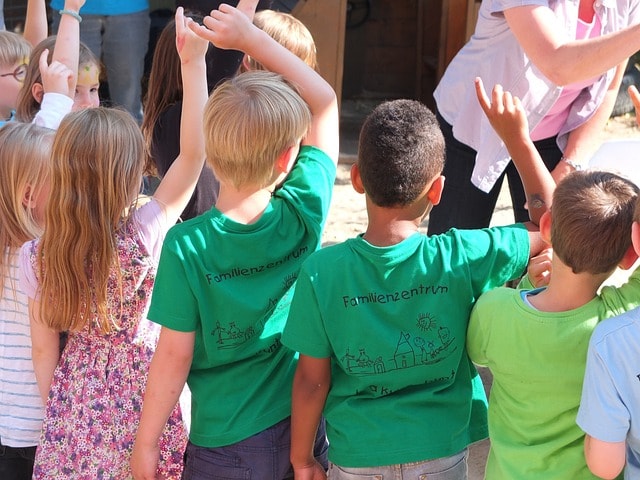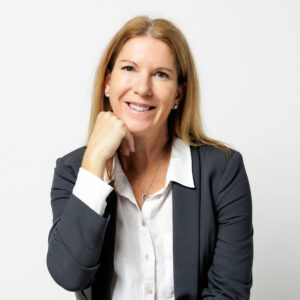I’ve helped countless Australian business owners with childcare centre finance, so I know first hand how much goes into it. It can be an amazing opportunity to make a difference in the lives of young families, while potentially established a profitable business. But one of the biggest challenges my clients typically face is getting the funding.
In this article I’ll walk you through the process of getting a loan to buy a childcare centre in Australia, using my own experience and current market data.

The Australian Childcare Market
Before we get into the childcare centre loan process let’s look at the Australian childcare market. The sector has grown significantly over the last few years driven by increasing demand from working parents and government support.
According to the Australian Bureau of Statistics (ABS) as of June 2023 there were around 13,000 long day care services in Australia, with New South Wales having the most services at around 3,700 [1].
The Australian childcare industry is worth over $14 billion a year and is growing [2]. It’s a great sector for investors and entrepreneurs.
Year |
Industry Revenue ($ Billions AUD) |
|---|---|
2020 |
12.8 |
2021 |
13.2 |
2022 |
13.7 |
2023 |
14.1 |
2024 |
14.5 (projected) |
Source: IBISWorld Childcare Services in Australia Industry Report, 2023
So let’s get into how you can get a loan to buy a child care centre.
What are Your Loan Options?
When buying a childcare business you have several options:
-
Commercial Loans: These are for business purchases and can be used to buy a child care centre. They can be secured or unsecured. If you’re unsure, our team can help guide you through the pros and cons of each option.
-
Asset Finance: Used to purchase equipment and facilities for the centre.
-
Working Capital Loans: To cover initial operating costs.
-
Vendor Finance: Sometimes the seller will finance part of the purchase.
How Do You Get a Loan?
Getting a loan to buy a child care centre requires planning and research. This is where a business finance broker can be an invaluable resource – helping you save time, money and headaches.
1. Review Your Finances
It’s advisable to contact your business finance broker before you approach lenders (as you may affect your credit score). Together, we’ll take a good hard look at your financial situation so we can work out the best options for your situation. This will usually involve a review of things like your credit score, assets and liabilities, business experience, particularly in childcare or education, and available capital for a deposit.
For your planning, most lenders in Australia require a minimum deposit of 20-30% of the purchase price for a child care business [3].
Buy a Child Care Centre Calculator
Estimate the loan amount you'll need to purchase a childcare business in Australia.
2. Create a Business Plan
A business plan helps you understand the opportunities and potential threats to your business. It also helps a potential lender understand the business opportunity. Be sure to work with an experienced expert who knows exactly what the bank manager wants to see, and include a cash flow forecast.
-
Market analysis of the local area
-
Financials (cash flow projection)
-
Staffing plan
-
Marketing plan
-
Compliance with regulations
Make sure to highlight the key features of the centre such as its location (is it in a shopping centre or an established residential area) and its growth potential.

3. Prepare The Required Documents
The lender you are applying with will likely need the following:
-
Personal and business tax returns
-
Financials of the childcare centre you are buying
-
Proof of assets and liabilities
-
Business registration documents
-
Childcare service approval documents
4. Select the Right Lender
Not all lenders are created equal when it comes to childcare businesses. Some banks and financial institutions specialise in childcare centre loans. Some specialise in lending for regional markets. The business lending market was much simpler 20 years ago – today you can find lending options from major banks, smaller banks, credit unions, non-bank and niche lenders.
To make things much easier, business owners are increasingly working with expert business finance brokers to both find and secure the right business loan for their situation.
5. How the Valuation Works
Before giving you a loan, lenders are likely to want to carry out a valuation of the childcare business.
They will consider:
-
Location (e.g. is it in a growing Western Sydney suburb or Sydney’s Eastern suburbs?)
-
Occupancy rates
-
Profit margins
-
Compliance history
-
Facilities
It’s important to have a realistic view of the value of the business before applying for a loan. Asking for too much will mean a much higher chance of rejection, while also affecting your credit score if you then go to another lender to try again. This impacts the interest rates you may be offered.
6. Negotiate the Loan
Once the lender has agreed to loan you the needed funding, it’s time to carefully review the loan documents. Be sure you understand the interest rate, loan term, repayment schedule and special conditions or covenants before signing.
Things to Consider When Buying a Childcare Centre
Finance is important but there are other things to consider when buying a childcare centre:
-
Location: Is it in a prime location with high demand? For example a centre in the Sydney CBD or near a busy bus terminal might have more potential.
-
Licensing and Compliance: Make sure the centre has all required approvals including service approval from the relevant authorities.
-
Occupancy Rates: A established childcare centre should have high occupancy rates.
-
Staff Retention: Experienced long term staff can be an asset.
-
Facilities: Is it a purpose built childcare centre? Well maintained facilities will reduce future capital expenditure.
-
Growth Potential: Look for centres with room for expansion or improvement in services.
Average Prices for Child Care Centres
Here’s an overview of childcare businesses for sale across different parts of Australia:
Region |
Average Price |
Average Licenced Places |
Average Daily Fee |
|---|---|---|---|
Sydney Metro |
$1,800,000 |
75 |
$120 |
Regional NSW |
$950,000 |
60 |
$95 |
Melbourne Metro |
$1,600,000 |
70 |
$115 |
Brisbane Metro |
$1,400,000 |
65 |
$105 |
Perth Metro |
$1,200,000 |
60 |
$100 |
Source: Compiled from listings on business sale websites as of September 2023
Example: Childcare Centre Purchase
Here’s an example scenario of a child care centre purchase in the busy suburb in the Canterbury Bankstown Council area of Sydney.
-
Initial Research: Uncovered a great childcare service that had been operating for over 15 years.
-
Financial Review: Centre had a net profit of $300,000 per year.
-
Loan Application: 3 lenders were approached, and a loan was secured for 70% of the purchase price at 6.5% p.a.
-
Due Diligence: All financials, compliance history were reviewed, and key staff were interviewed.
-
Negotiation: Final purchase price was $1.5 million including all equipment and handover.
-
Settlement: Took 12 weeks from acceptance to settlement.
Frequently Asked Questions
How profitable are child care centres?
Child care centres can be quite profitable, but profitability varies widely depending on factors such as location, size, and management efficiency. According to IBISWorld, the average profit margin for childcare centres in Australia is around 15-20% [4]. However, well-run centres in high-demand areas can see profit margins exceed 25%. It’s important to note that profitability is closely tied to occupancy rates, staff costs, and compliance with regulatory requirements. A centre with 80-90% occupancy and efficient operations can generate significant returns, while those struggling with low enrolment or high overheads may see much lower profits.
Are childcare centres a good investment?
Childcare centres can be excellent investments, particularly in Australia where government subsidies and increasing workforce participation drive demand. The sector has shown resilience, even during economic downturns, as childcare is often viewed as a necessity for working parents. According to Property Australia, childcare centres have been yielding returns of 5-7% in recent years, outperforming many other commercial property investments [5]. However, like any investment, success depends on factors such as location, management quality, and market conditions. The regulatory environment is also a crucial consideration, as compliance costs can impact profitability.
How much does a childcare center owner make in Australia?
The income of a childcare centre owner in Australia can vary significantly based on the size of the centre, its location, and how hands-on the owner is in day-to-day operations. On average, childcare centre owners in Australia can expect to earn between $70,000 to $200,000 annually [6]. However, owners of larger centres or multiple locations can earn considerably more. It’s important to note that this figure represents the owner’s salary and doesn’t include the overall profit of the business, which might be reinvested or distributed differently. Factors such as occupancy rates, fee structure, and operational efficiency play crucial roles in determining an owner’s potential earnings.
How much does daycare cost in Australia?
Daycare costs in Australia vary depending on the type of care, location, and the family’s eligibility for government subsidies. As of 2024, the average daily fee for long day care centres ranges from $80 to $180 per day [7]. However, prices can be higher in urban areas like Sydney or Melbourne, where some centres charge over $200 per day. It’s important to note that most families don’t pay the full fee due to the Child Care Subsidy (CCS). The CCS can cover between 50% to 85% of childcare costs for eligible families, significantly reducing out-of-pocket expenses. After subsidies, many families pay between $30 to $60 per day for childcare, though this can vary based on individual circumstances and the chosen centre.

Conclusion
Buying a childcare centre requires planning, research and understanding of the childcare industry and the financial environment. It’s a complex process but can be very rewarding – both financial and to the community.
Remember, every childcare business is different, whether it’s a leasehold in New South Wales or a freehold in Coffs Harbour. Take your time to find the right one that suits your goals and budget.
If you love education and see yourself as an experienced operator in the childcare industry, buying a childcare centre could be your dream career. Just be sure to do your due diligence, get professional advice when needed and always put the children and families you’ll be serving at the top of your decision making.
Learn more here: Childcare Center Loans.
References
[1] Australian Bureau of Statistics. (2023). Childhood Education and Care, Australia.
[2] IBISWorld. (2023). Childcare Services in Australia Industry Report.
[3] Australian Government. (2023). Business.gov.au – Financing a business.
[4] IBISWorld. (2024). Childcare Services in Australia – Industry Report.
[5] Property Australia. (2023). Childcare Centres: A Growing Investment Opportunity.
[6] PayScale. (2024). Childcare Centre Owner Salary in Australia.
[7] Australian Government Department of Education. (2024). Early Childhood Education and Care Report.

